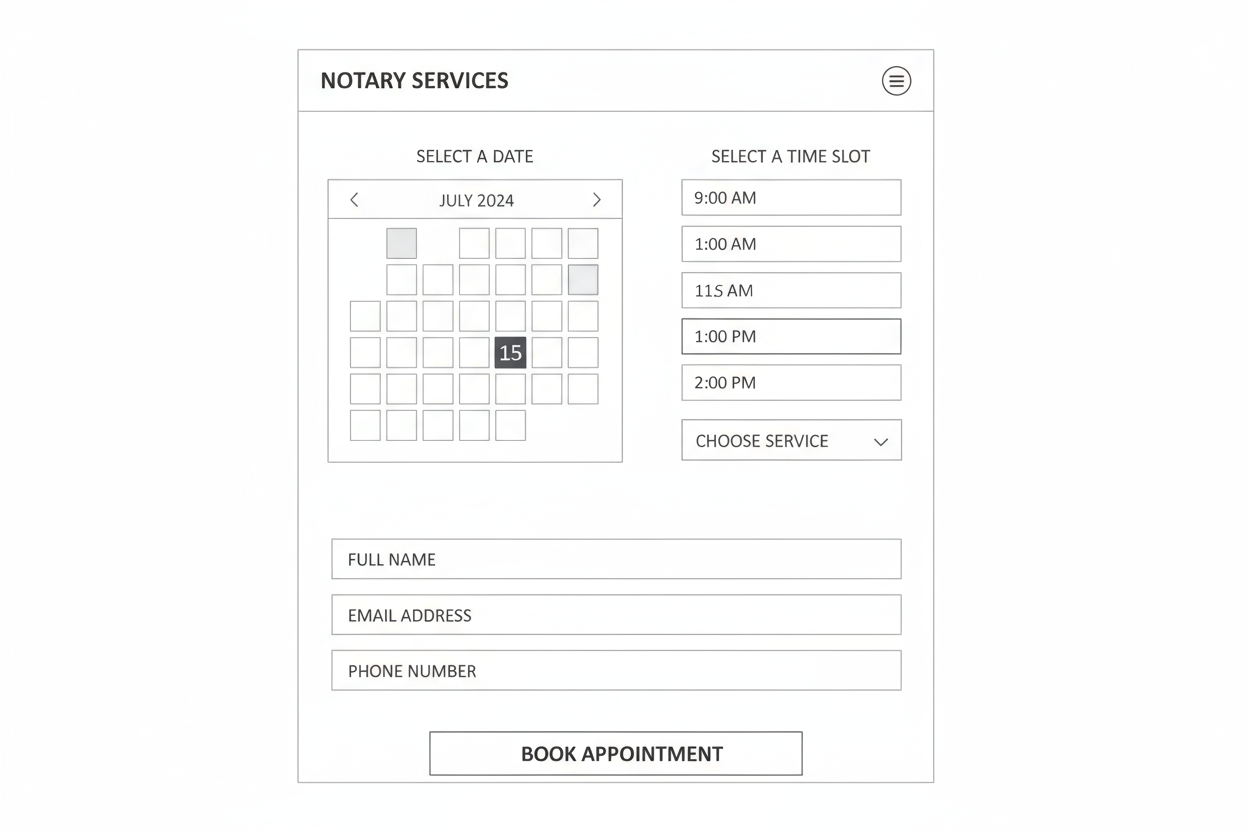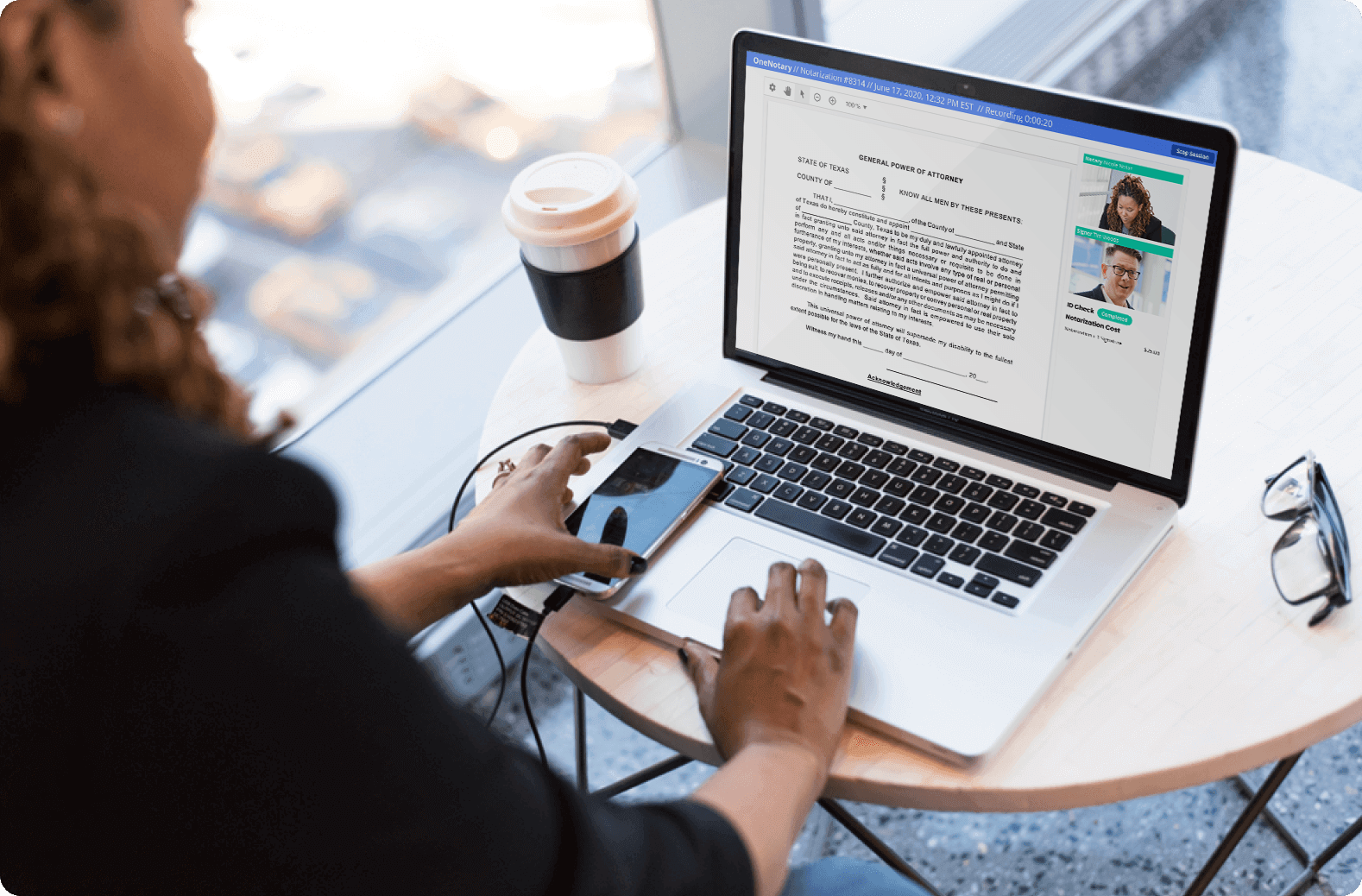How the RON Process Works: A Step-by-Step Guide
-

Booking & Document Submission
Request an Appointment: Use our online scheduling tool to select a convenient date and time.
Upload Your Document: You will securely upload the document you need notarized (in PDF format). DO NOT sign the document beforehand.
Confirm Identity: You will be prompted to enter basic personal information (name, address, last four digits of SSN) to prepare for the identity verification process.
-

Identity Verification & Security Check
Credential Analysis: Our platform will scan and verify your government-issued photo ID (Driver's License, Passport, etc.) to confirm it is valid and authentic.
Knowledge-Based Authentication (KBA): You will be asked a short series of four to five unique multiple-choice questions based on your public records and credit history. This step ensures that the person attempting to sign is who they claim to be. (You must pass this quiz to continue.)
-

The Live Video Session
Connect with Me: You will enter a private, secure, and recorded video session with me, your commissioned Remote Online Notary.
Verify Willingness: I will visually confirm your identity, ensure you are of sound mind, and confirm that you understand the document you are about to sign and that you are signing willingly.
Electronic Signing: While I watch, you will apply your electronic signature to the document using your mouse, trackpad, or touch screen.
-

Finalization & Delivery
Notary Sealing: I will apply my official electronic notary seal and digital signature to the document. This process instantly encrypts the document, making it tamper-evident and legally binding.
Secure Delivery: You will receive the final, legally notarized electronic document (PDF) almost immediately via email or a secure download link. The video recording and audit trail are securely stored according to state law for future reference.
Preparing for Your Virtual Notary Appointment
Preparing for a virtual notary appointment ensures a smooth and efficient experience. The following steps will guide you through what to expect and how to prepare.
Minimize distractions by choosing a quiet, well-lit room.
Ensure privacy by being alone with only those involved in the notarization.
Use good lighting so your face and ID are clearly visible; avoid backlighting from bright windows.
Credit Card Ready: Have your credit card information available. Our secure platform will process payment prior to or at the start of your notarial act.
Save your document as a PDF. If it's on paper, scan it to PDF. Apps like CamScanner are excellent for converting photos to PDF.
DO NOT pre-sign; signatures must be applied electronically during the video session with the notary present.
Ensure all blanks are filled (unless intended) and verify that all information is accurate.
Acceptable ID: One unexpired, government-issued photo ID (e.g., Driver's License, State-Issued ID, Passport) is required.
Physical ID: Bring the actual ID for visual verification during the video call.
No Copies or Photos: Digital copies or photos of the ID are not accepted.
Reliable Internet: A stable connection is essential for clear video and audio.
Device with Camera & Microphone: Use a computer, laptop, or tablet with a working webcam and microphone; larger screens are preferred.
Supported Browser: Ensure your browser (Chrome, Firefox, Edge, Safari) is updated for secure online access.
